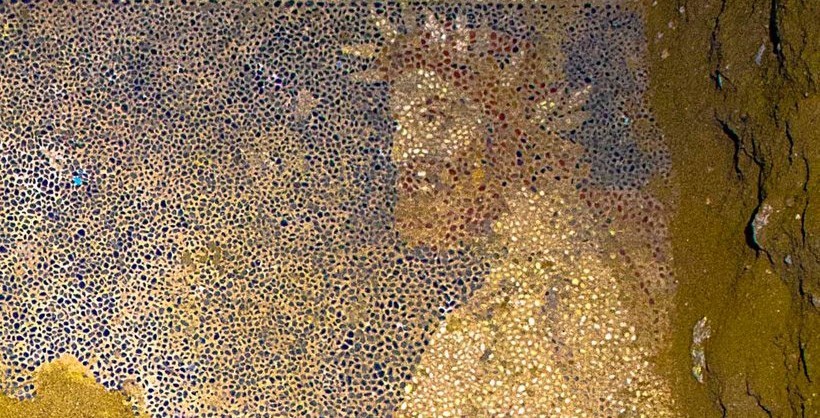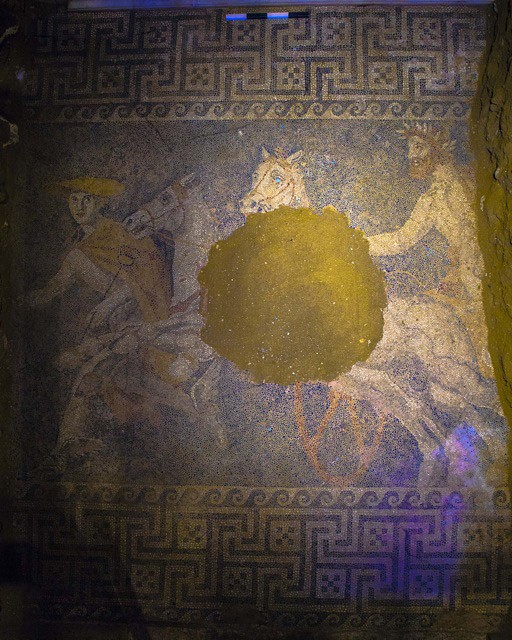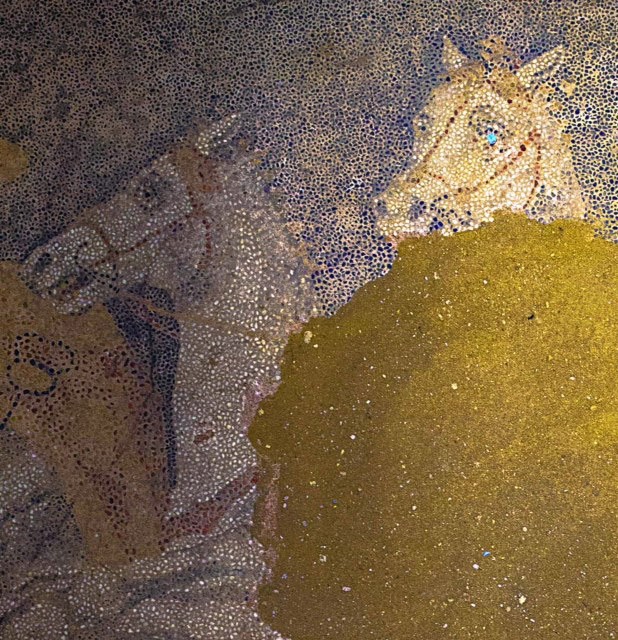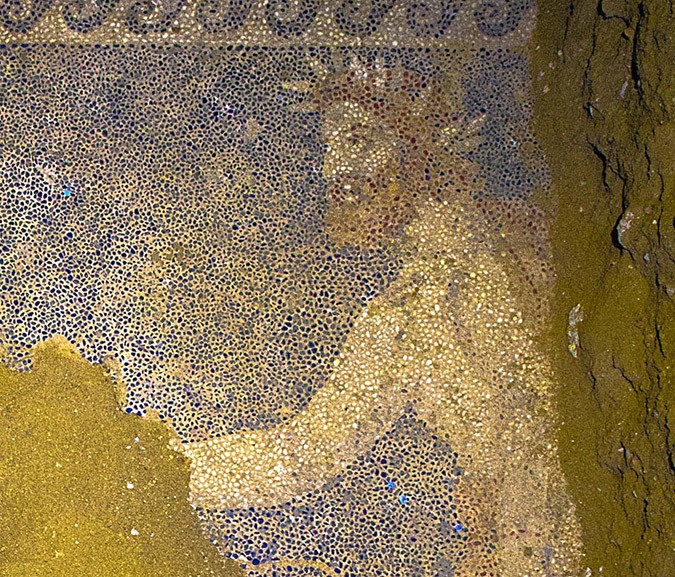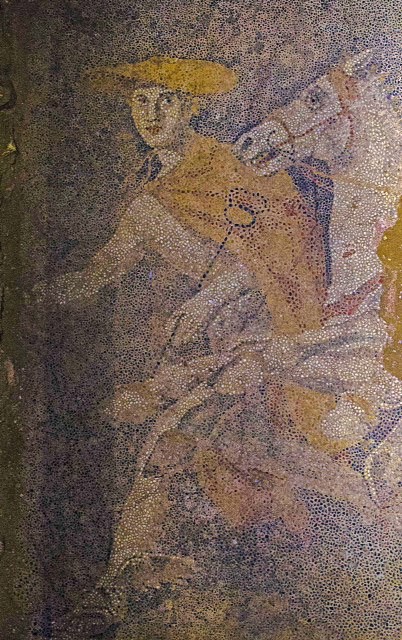In an article entitled “Stunning Mosaic Floor Uncovered in Greece’s Mystery Tomb,” Discovery News attempts to shed some light on the mysterious identity of the bearded man depicted in the amazing mosaic floor, which has been unearthed on Sunday in the burial mound complex at Amphipolis in northern Greece.
The colorful mosaic, made from small white, black, gray, blue, red and yellow pebbles, depicts a chariot in motion that is pulled by two white horses and driven by a bearded man wearing a laurel wreath on his head. In the front of the chariot we can see the god Hermes, the psychopompos (the Greek term for “guide of souls”), who leads souls to the banks of the river Styx.
The Discovery News article cites Dorothy King, a classical archaeologist not involved in the excavation, who says that the identity of Hermes is clear from his insignia “which are standard iconography and seen in a number of Macedonian tombs.”
“But who is the bearded man in the chariot being led by Hermes? The profile depiction to me suggests that it is Philip II,” Ms. King wrote in her blog.
Her belief that the charioteer is in fact Phillip II, the father of Alexander the Great, is based on the fact that the man with the laurel wreath on his head is shown in profile, hiding the right side of his face. The British archaeologist notes that Philip II lost his right eye, but also won a wreath at the Olympic games.
“This is probably Philip II and his horses, adding to the idea that this was a tomb or shrine glorifying Alexander. Philip II died so that Alexander might become Great,” Ms. King underlines.

